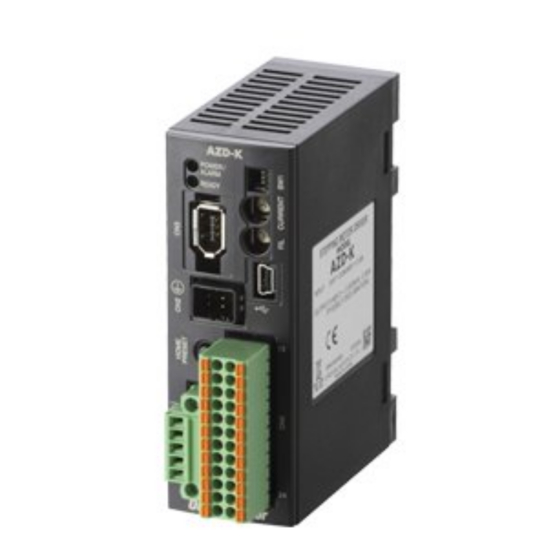Advertisement
Table of Contents
- 1 Table of Contents
- 2 Introduction
- 3 Safety Precautions
- 4 Precautions for Use
- 5 Regulations and Standards
- 6 Preparation
- 7 Installation
- 8 Connection
- 9 Explanation of I/O Signals
- 10 Setting
- 11 Guidance
- 12 Inspection
- 13 Alarm (Protective Function)
- 14 Troubleshooting
- 15 To Use the Product in more Convenient Manners
- 16 Accessories
- Download this manual
Stepping Motor and Driver Package
AZ Series/
Motorized actuator equipped with AZ Series
DC power input
Built-in controller type
Pulse input type with RS-485 communication interface
Pulse input type
OPERATING MANUAL Driver
MSIP-REM-OMC-088
1
Introduction ................................... 2
2
Safety precautions ........................ 5
3
Precautions for use ........................ 7
4
Regulations and standards .......... 8
5
Preparation ..................................... 9
6
Installation .................................... 12
7
Connection ................................... 14
8
Explanation of I/O signals .......... 25
9
Setting ........................................... 28
Thank you for purchasing an Oriental Motor product.
This Manual describes product handling procedures and safety precautions.
Please read it thoroughly to ensure safe operation.
Always keep the manual where it is readily available.
10 Guidance ....................................... 32
11 Inspection ..................................... 43
12 Alarm (protective function) ....... 44
13 Troubleshooting .......................... 45
convenient manners ................... 47
15 Accessories.................................... 48
HM-60315-2
Advertisement
Table of Contents











Need help?
Do you have a question about the AZM14*K Series and is the answer not in the manual?
Questions and answers